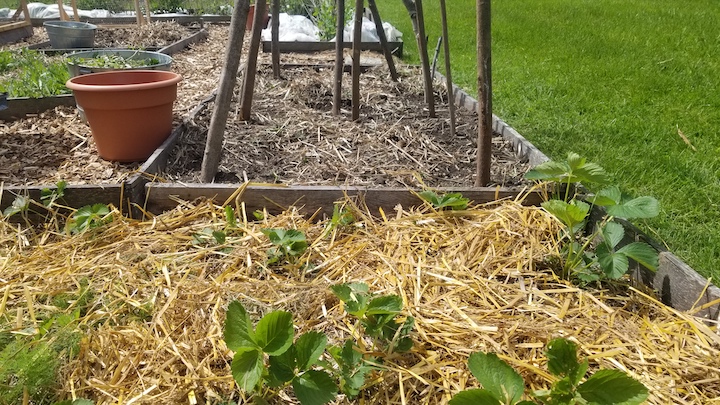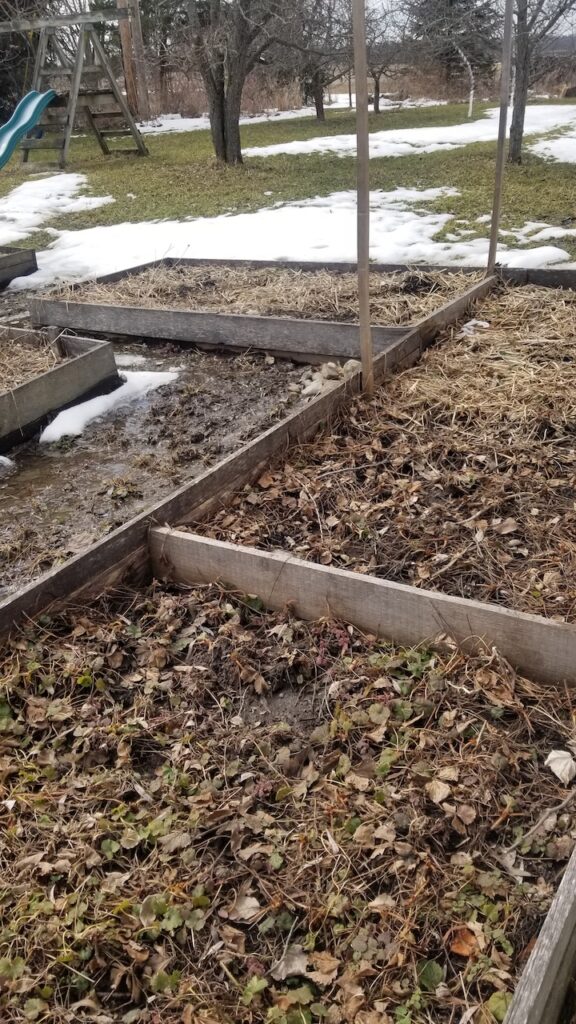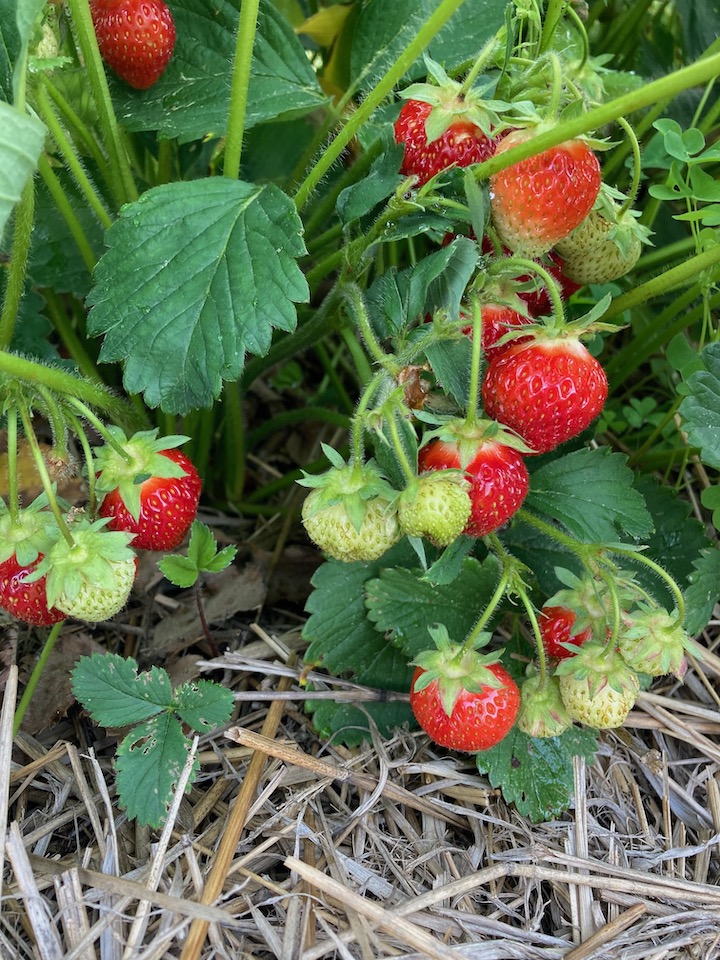By Donna Levy
Heaven, earth and water; body, soul and spirit; the beginning, middle and end. Threes are attributed to symbolism, aesthetic beauty, crop rotation schemes and, in this case, managing strawberries in raised beds.
An avid gardener for years, I tended to get lazy about taking care of strawberries. Inevitably I didn’t renovate them and the perennial weeds got so bad after several years that I neglected them, only to replant somewhere else several years later.
I now have a devoted area to strawberries and found a system where strawberries can be harvested every year without purchasing new plants. This allows for growing a favorite variety, the one that does best in a particular site. This system also includes built-in renovation.

A section of our zone 5b farm in Interlaken, New York, now has a raised bed kitchen garden. I started the first year with strawberries planted in one-third of an L-shaped bed, mulching them with straw. In the meantime, the other two-thirds of the “L” were planted in vegetables. Peppers and other non-trailing vegetables lend themselves best for this scheme.

Year two: After the strawberries from the original planting were harvested, I fertilized and cut back the plants and encouraged the runners to creep in amongst the vegetables (in this case, peppers) in the next section (the second third). The final section was once again used for a vegetable that wouldn’t trail. In the fall after the pepper plants were removed, I mulched the strawberries that crept into the second section with straw.
Year three: The oldest planting of strawberries was weeded in the spring and the strawberries in the second section (those that were mulched in the fall of year two) were encouraged to grow. Both sections were harvested and subsequently cut back and fertilized after fruiting. Once again, the runners were encouraged to expand into the final third of the L-shaped bed. At this point if the runners haven’t filled the third section, some plants from section one can be divided and transplanted to this third section.

Year four: Now, there are strawberry plants in all three sections. The harvest, cutting back and fertilizing as described in years two and three are repeated. However, those plants in the first section are getting weedy, making them difficult to maintain. I just harvest those strawberries in June and then remove the plants and weeds and prepare the bed for a new planting. Rather than having to purchase new plants, I save some of those plants removed or divide some of the plants from the other two beds, replanting them in the first section. Now these plants can be mulched and the process continues.
I no longer feel defeated by the overgrown, perennial weeds in my patch. This system will keep those sweet berries coming year after year. All that is needed is a three-section, contiguous bed devoted to the beginning, the middle and the end of the strawberry patch.
Donna Levy, a graduate of Cornell University in plant science, owns a 70-acre organic farm in Interlaken, New York. Levy is retired from Cornell Botanic Gardens where she worked for 35 years as an environmental educator, plant health care coordinator and gardener. Levy continues to garden, grows garlic for sale with her husband, and co-coordinates the Interlaken Community Vegetable Patch.
This article was originally published in the summer 2022 issue of The Maine Organic Farmer & Gardener.
Interested in more gardening resources? Sign up for MOFGA’s Gardener Newsletter.
